2025 CHAUTAUQUA

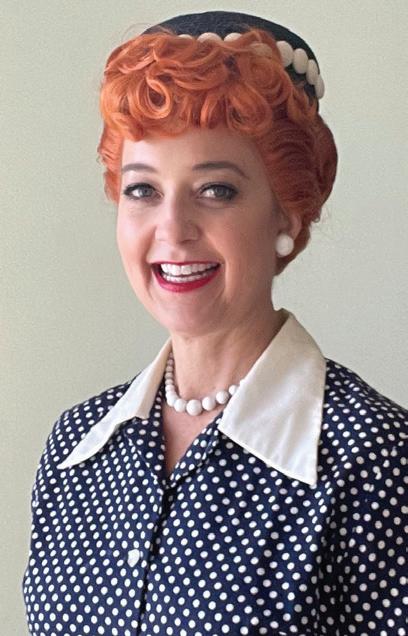
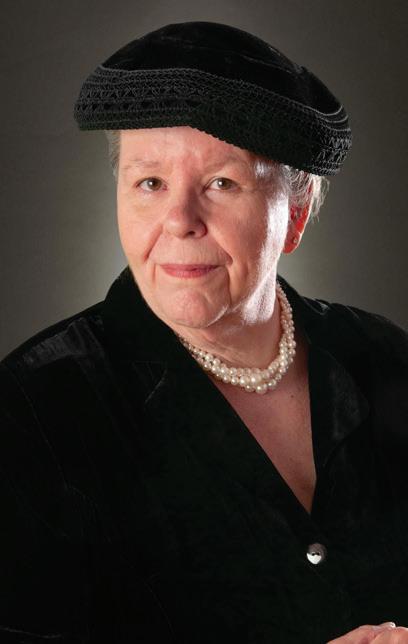
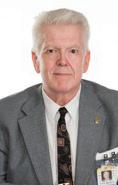
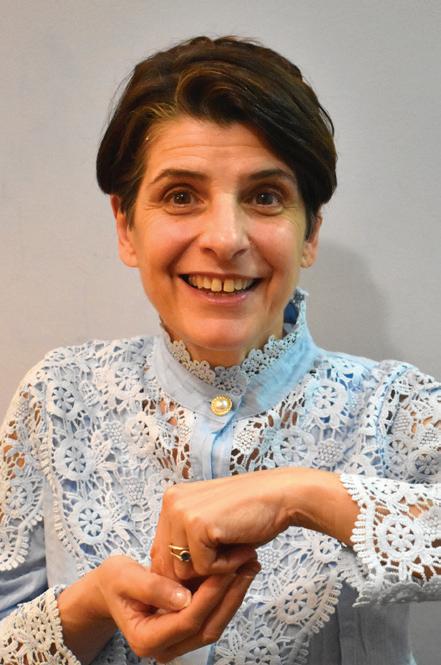
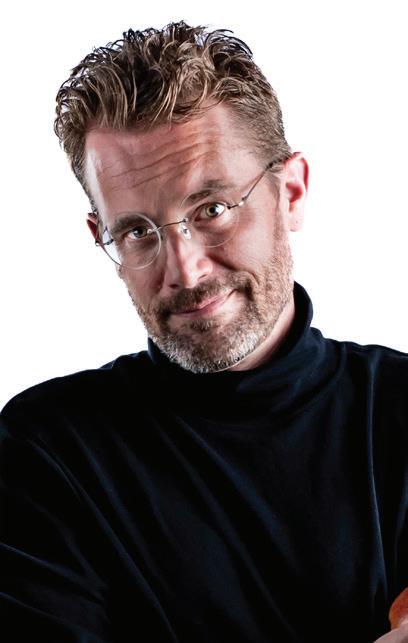

























The week of Ashland Chautauqua brings excitement into the air. The Chautauqua banners and various forms of publicity have been announcing its arrival. And now, here it is again, this time for its 26th annual edition.
The “Breaking Barriers” theme showcases a variety of characters who did something that had seemed very unlikely or impossible.
Lucille Ball, a master at comedic acting, was also an astute business executive, not expected of a woman in the mid-20th century!
Frances Perkins, indefatigable champion for workers, became the first woman member of a U.S. presidential cabinet when she was appointed Secretary of Labor by Franklin D. Roosevelt. Wernher von Braun, aerospace engineer and space architect, gave his brilliant scientific prowess first to the Third Reich’s war machine and then to America’s space program, leaving him with a checkered reputation.
Annie Sullivan, struggling with her own near-blindness and childhood deprivations, became the spectacular breakthrough teacher of Helen Keller, who could not see or hear, but yet became a renowned disabilities advocate, educator, and writer.
Steve Jobs, a creative thinker and business entrepreneur, became a pioneer in 21st century technology for mass consumption.
This year’s scholars, in the order of their characters listed above, and in the order of their performances Tuesday through Saturday evenings, are Leslie Goddard, Deleasa Randall-Griffiths, Larry Bounds, Anne Pasquale, and Jeremy Meier. We all know Deleasa from her years of leadership with Ashland Chautauqua, and she portrayed Carrie Chapman Catt in 2015. Leslie appeared in Ashland recently as Lizzie Borden, Larry as Harry Houdini, and Jeremy as John Dillinger. Anne is new to Ashland Chautauqua, and we wish her a warm welcome.
We don’t mean for our adult and youth workshops conducted by the scholars to be Ashland Chautauqua’s “best kept secret!” Take away the secrecy by checking the schedule on page 3 for daytime workshops. Choose your favorites to attend.
All evening performances and all workshops are free and open to the public. Our locations are accessible, and we attempt to meet the needs of audience members with sensory differences.
Be sure to pick up your 5-Nighter card on Tuesday and have it marked by a Chautauqua volunteer every evening to be eligible for the prize drawing Saturday night.
Coffee with the Scholars will be held Thursday, Friday, and Saturday morning in the Community Room at the Ashland Board of Realtors (107 E Main Street), starting at 9:00 a.m. Everyone is welcome to get better acquainted with the scholars and learn about behind-thescenes Chautauqua.
Ashland Chautauqua is supported by the Ohio Arts Council, the City of Ashland’s Parks & Recreation Department, Explore Ashland, local businesses and organizations, and local residents who want to see this vibrant celebration of history thrive in our community. We are grateful to Ashland Main Street, our fiscal agent. This programming is planned and implemented by a committee of local citizen volunteers. Thanks to everyone—planners, funders, scholars, and audience members—who make Ashland Chautauqua an exciting and informative event year after year!
The lack of grant funding due to cuts in federal funding for the humanities limits Ashland Chautauqua’s ability to continue this annual programming. Your financial support for our event will help us to provide this free entertaining and educational programming. See page 14 for details on how to donate to our event.
Ashland Chautauqua’s 2026 theme is “America’s Stories,” in celebration of the 250th anniversary of American independence. We have made selections to honor a variety of ways our country has come together to be its own unique story. The selected lineup includes Rebecca Jimerson as Coretta Scott King, Martin Lahman as Thomas Paine, Becky Stone as Mary Fields, John Dennis Anderson as Washington Irving, and Susan Marie Fronczak as Erma Bombeck. See page 19 for more information about next year’s event.
All Events are FREE and Open to the Public | All event locations are accessible In case of inclement weather, evening events may be moved indoors. Daily updates will be available after 5 p.m. at: Website: www.AshlandChautauqua.org | Facebook: Facebook.com/AshlandChautauqua | Band Shell Hotline: 419-281-3018
TUESDAY, JULY 15
1 p.m. We Love Lucy!
Youth workshop with Leslie Goddard
Location: The Freer Home
3 p.m. Frances Perkins & the Roosevelts:
From New York to Washington, D.C.
Adult workshop with Deleasa Randall-Griffiths
Location: Mill Run Place
MYERS MEMORIAL BAND SHELL
7 p.m. Opening Act: SHaK (Semer, Holthouse and Kastran)
8 p.m. An Evening with Lucille Ball
WEDNESDAY, JULY 16
10 a.m. Tell the Truth with Annie Sullivan
Adult workshop with Anne Pasquale
Location: The Golden Center at the Loudonville Public Library
1 p.m. Inspiring the Dream of Space Travel
Adult workshop with Larry Bounds
Location: Ashland County Council on Aging
2:30 p.m. The Best Sitcoms of the 1950s
Adult workshop with Leslie Goddard
Location: Ashland Public Library
MYERS MEMORIAL BAND SHELL
7 p.m. Opening Act: Steve Brown Jazz Trio
8 p.m. An Evening with Frances Perkins
THURSDAY, JULY 17
9 a.m. Coffee with the Scholars Location: Community Room, Ashland Board of Realtors
1 p.m. The WPA Federal Art Project
Youth workshop with Deleasa Randall-Griffiths
Location: Salvation Army Kroc Center
2:30 p.m. Story Telling - From Stage to Page and Back Again
Youth workshop with Anne Pasquale
Location: Ashland Public Library
4 p.m. What’s Wrong with this Thing?
Adult workshop with Jeremy Meier
Location: Ashland County Senior Citizens Center
MYERS MEMORIAL BAND SHELL
7 p.m. Opening Act: The Bridge Live!
8 p.m. An Evening with Wernher von Braun

FRIDAY, JULY 18
9 a.m. Coffee with the Scholars Location: Community Room, Ashland Board of Realtors
10 a.m. New Heroes, New Bugs, New Toys!
Youth workshop with Jeremy Meier
Location: YMCA Youth Camp at Myers Memorial Band Shell
Note: Rain site location is the Ashland YMCA
2:30 p.m. How to Make a Rocket Fly!
Youth workshop with Larry Bounds
Location: Ashland Public Library
MYERS MEMORIAL BAND SHELL
7 p.m. Opening Act: Falcon Punch
8 p.m. An Evening with Annie Sullivan
American Sign Language interpretation funded by the Ashland County Community Foundation.
SATURDAY, JULY 19
9 a.m. Coffee with the Scholars Location: Community Room, Ashland Board of Realtors
MYERS MEMORIAL BAND SHELL
7 p.m. Opening Act: Austin Walkin’ Cane
8 p.m. An Evening with Steve Jobs
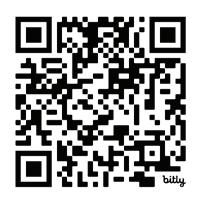
Please take a few minutes and complete a brief survey to help us improve our programming and provide suggestions for future Ashland Chautauqua characters. This is also crucial for our grant funding. The survey is online at: ashlandchautauqua.org or scan the QR code.
For help hearing spoken speech, try Live Transcribe Download this free app to your phone. (Some newer Apple devices come with transcription. Check your IOS device.)
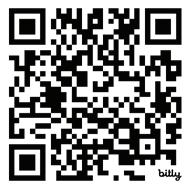

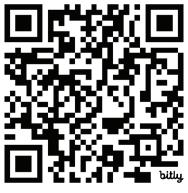

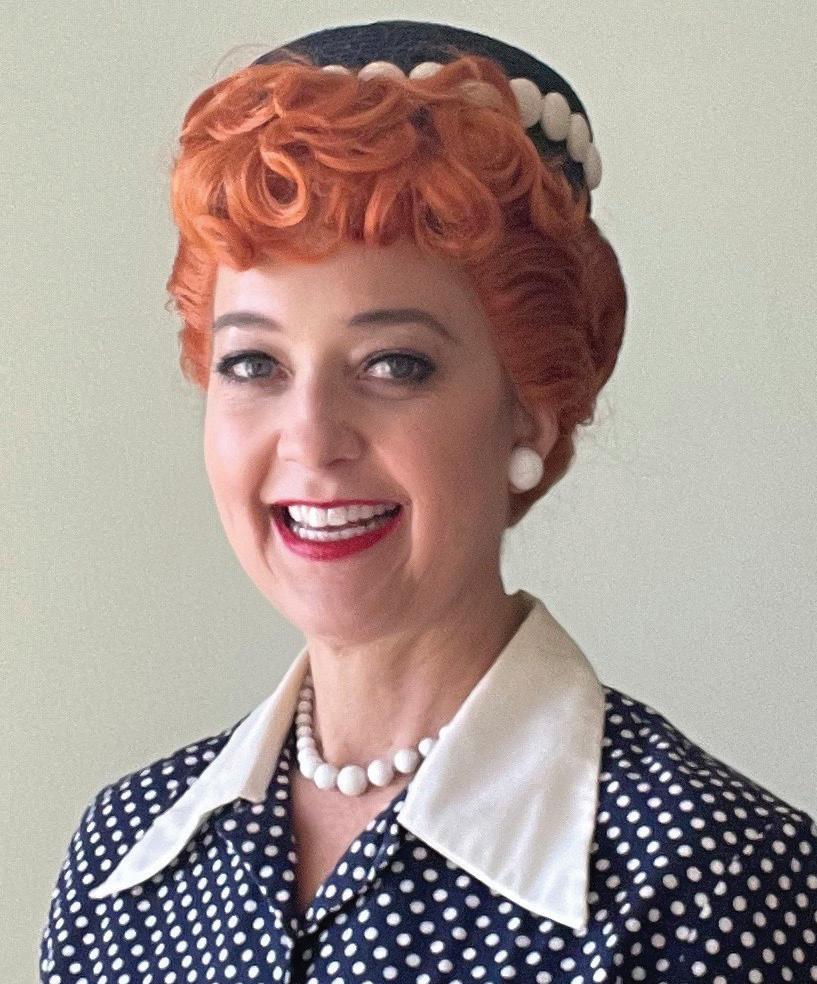
1911 Born August 6
1933 Moved to Hollywood to become a Goldwyn Girl
1940 Met Desi Arnaz on set of Too Many Girls
1948 Began work on radio sitcom My Favorite Husband
1951 I Love Lucy premiered on CBS; daughter Lucie Arnaz born
1953 Son Desi Arnaz Jr. born; Little Ricky born on I Love Lucy
1957 The 180th and final episode of I Love Lucy aired
1960 Filed for divorce from Desi Arnaz
1961 Married comedian Gary Morton
1962 Purchased Desi Arnaz’s half of Desilu Studios
1967 Sold Desilu to Paramount/Gulf and Western for $17 million
1974 Starred in final theatrical film Mame
1989 Died at age 77

by Leslie Goddard
When television executives at CBS approached Lucille Ball about developing her popular radio comedy, “My Favorite Husband” into a television series, Ball had one request. Rather than cast her radio costar as her husband, Ball asked that the series hire her real-life husband, Cuban bandleader Desi Arnaz.
CBS balked. No Latino actor had ever starred in an English-language primetime TV show. Arnaz’s thick Cuban accent and background would alienate audiences, they said. No one would believe an all-American white woman would be married to a Hispanic man, they argued.
Ball refused to concede. She and her husband created a vaudeville act and toured the country, playing to packed houses and proving to the studio that American audiences would accept a mixed-ethnicity marriage. CBS was convinced and hired Desi Arnaz to play Lucy’s husband on the show, I Love Lucy.
Television executives could hardly have known it then, but that was the first of many occasions in which Lucille Ball would smash through social and cultural barriers.
Lucille Ball is recognized today as a true trailblazer, onscreen and off. In the 1930s and 1940s, when Ball worked in the movie industry, few actresses did stunt comedy work. At most, comic actresses were allowed to tell funny stories and deliver witty comments. Beauty and charm mattered much more than slapstick. But on television, Ball discovered she had a gift for physical comedy. Her impeccable timing, fearless physicality and broad facial expressions, combined with the show’s masterful writing and the absurd situations they put her in, proved an unbeatable combination. Audiences adored Lucille Ball. Within six months of its 1951 debut, I Love Lucy had become the most popular television sitcom.
There are other ways as well that Lucille Ball changed TV history. Since she performed best in front of spectators, I Love Lucy was shot in front of a live studio audience. This required the show to pioneer new filming techniques using three cameras to get wide-angle, medium and closerange images. These techniques, and the resulting advances in editing and lighting they required, set precedents still used in television production today.
Here’s another example. CBS wanted to make I Love Lucy in New York City, but Ball and Arnaz wanted to remain in California. This was a problem. At the time, most sitcoms were broadcast from the east coast, where most television owners lived, to maximize the number of viewers receiving a good-quality image. Viewers in western states had to watch blurry recordings made on low-quality machines called Kinescopes. To get around the problem, I Love Lucy was shot on 35mm film, something
unheard-of in television at the time. That meant episodes of I Love Lucy were preserved in a high-quality format. When CBS executives hesitantly decided to rebroadcast some prior episodes, audiences happily tuned in. The ratings success of those re-runs launched new possibilities for syndication.
Just prior to season two of I Love Lucy, Ball discovered that she was pregnant with her second child, which looked like a disaster. The thenprevailing Code of Practices for Television Broadcasters prohibited any depiction of pregnancy on the air. But producer Jess Oppenheimer encouraged Ball to fight back, asking why it would be wrong for Lucy Ricardo to have a baby in the show.
Happily, the show’s producers and sponsor Phillip Morris agreed. Although the word “pregnant” was never used, Ball’s pregnancy was written into the show. Audiences not only accepted the storyline, they loved it. The episode where Lucy Ricardo delivers her fictional son, Ricky (aired on the same day that Lucille Ball delivered her real-life son, Desi Jr.) set a new viewership record. Seventy-two percent of homes with television sets tuned in. Newspapers ran front-page headlines, and TV Guide magazine put Desi Jr. on the cover of its first issue, captioned “Lucy’s $50,000,000 baby.”
All through her career, Lucille Ball kept breaking barriers. When Arnaz stepped down as president of their production studio, Desilu, in 1962, and sold off his ownership shares, Ball stepped in, becoming the first woman to own and run a major television production studio. Under her leadership, the studio backed some of the era’s top hits, including such hits as Mission: Impossible and Star Trek.
Lucille Ball might be best remembered for creating the beloved character of Lucy Ricardo, but her deeper legacy is her understanding of television’s possibilities at a time when the medium was still in its infancy. She saw that the young medium of television offered possibilities for a woman to reshape her own destiny, both onstage and off.
ADULT WORKSHOP: The Best Sitcoms of the 1950s
Wednesday, July 16, 2025 at 2:30 p.m.
Ashland Public Library
Television might have been in its infancy in the 1950s, but this era produced some of the funniest, most clever sitcoms of all time. Join historian Leslie Goddard to look back at shows like The Honeymooners, Leave It to Beaver, Father Knows Best and of course, I Love Lucy. What were the best 1950s sitcoms? Are they still as fresh today as they were 70 years ago? Watch some clips and cast your vote for the greatest 1950s sitcoms.
YOUTH WORKSHOP: We Love Lucy!
Tuesday, July 15, 2025 at 1 p.m.
The Freer Home
Ever hear of the TV star Lucille Ball? Get to know this famous comedian from the 1950s. We’ll read the book I Am Lucille Ball by Brad Meltzer to learn about her life. Then we’ll watch short scenes from the most famous episodes of her TV show, I Love Lucy. Finally, we’ll have a chance to try being Lucy herself as we act out some of her funniest moments.

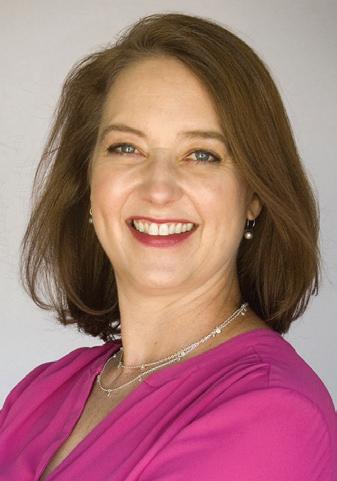
Leslie Goddard, Ph.D., is an awardwinning scholar and actress who has been portraying great women in history for more than twenty years. She holds an interdisciplinary Ph.D. from Northwestern University as well as a master’s degree and an undergraduate degree in theater.
A former museum director, she has written three books on Chicago history and currently works full-time as an actress, public speaker and author. Her portrayals have been seen by audiences in more than thirty-five states, including scores of universities, museums, libraries, civic organizations and Chautauqua festivals.

SHaK is comprised of Roger Semer (singer, songwriter, and guitarist); singer Robin Holthouse, and Dean Kastran (singer, songwriter, and bassist). SHaK is a strong, beautiful mix of two and three part harmonies. Their songs are an eclectic assortment of classic rock and roll, folk, and country featuring hits from the 50s, 60s, 70s, and 80s. A typical set might include songs by The Beatles, The Eagles, The Byrds, The Everly Brothers, Peter & Gordon, Elvis Presley, Ricky Nelson, and countless others. facebook.com/robin.n.roger.56
The “I Love Lucy” Book by Bart Andrews
Love, Lucy by Lucille Ball
Finding Lucy by American Masters: Season 15, Episode 4. PBS: 2000
Lucy & Desi: The Legendary Love Story of Television’s Most Famous Couple by Warren G. Harris
Honey, I’m Home! Sitcoms: Selling the American Dream by Gerard Jones
Ball of Fire: The Tumultuous Life and Comic Art of Lucille Ball by Stefan Kanfer
Lucy & Desi: A Home Movie by MPI Media Group: 1993
A.K.A. Lucy: The Dynamic and Determined Life of Lucille Ball by Sarah Royal
Desilu: The Story of Lucille Ball and Desi Arnaz by Coyne Steven Sanders and Tom Gilbert
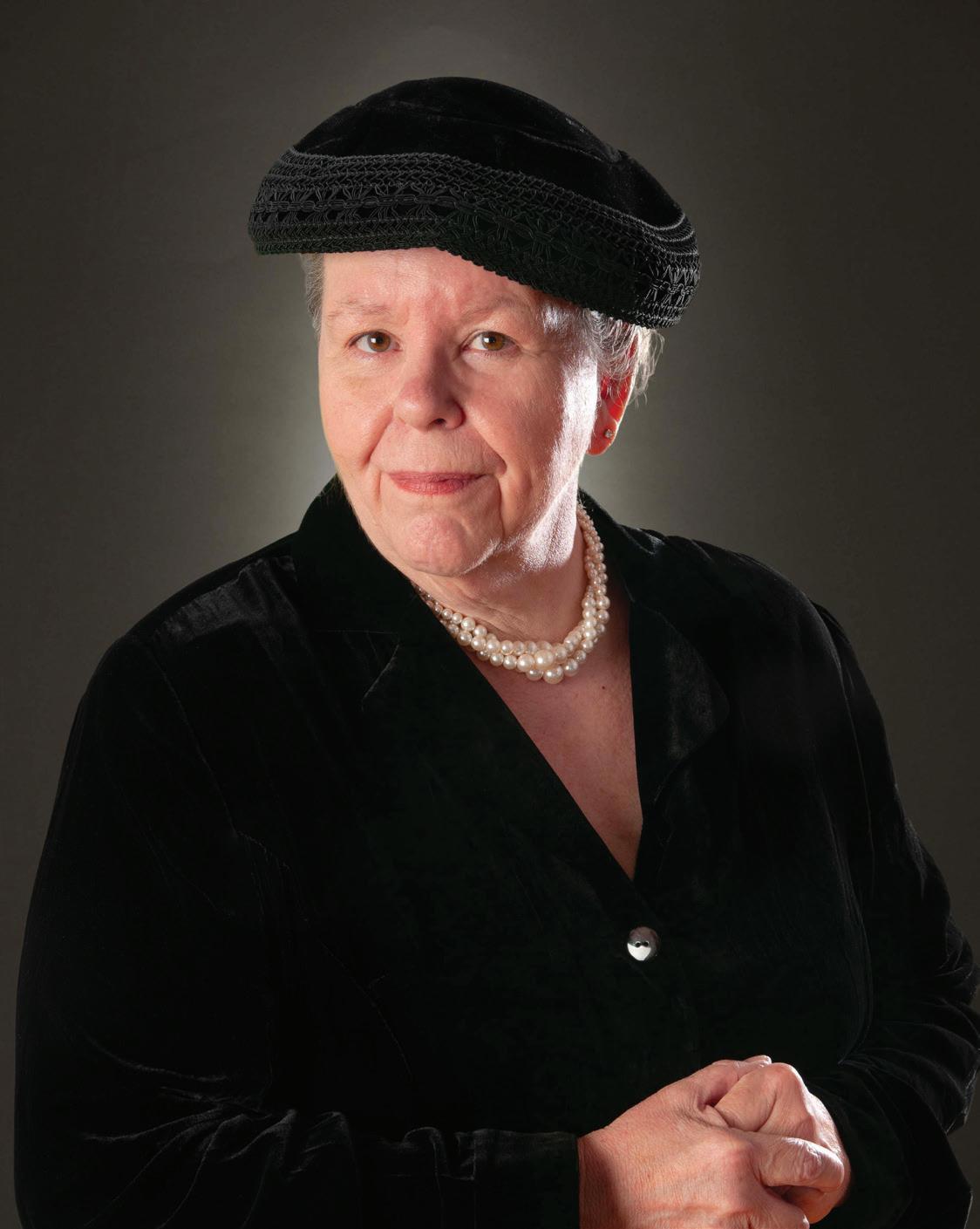
1880 Born in Boston
1902 Graduated from Mount Holyoke
1911 Eyewitness to Triangle Shirtwaist Factory Fire
1912 Hired as Executive Secretary of the Committee on Safety of the City of New York
1913 Married Paul C. Wilson
1916 Daughter Susanna Perkins Wilson born
1929 Head of New York State Industrial Commission, appointed by Governor Franklin D. Roosevelt
1933 U.S. Secretary of Labor until 1945; first female U.S. cabinet member; work focused on: Social Security Act, New Deal Jobs Programs, U.S. Employment Service, National Labor Standards, U.S. Membership Immigration
1946 Wrote The Roosevelt I Knew
1955 Visiting professor at Cornell University until 1965
1965 Suffered a stroke and died May 14, at the age of 85

by Deleasa Randall-Griffiths
She was the first woman to hold a United States cabinet position. She was the longest serving Secretary of Labor in U.S. history. She was friends with Franklin Roosevelt from his rise to governor of New York through his presidency. She was the “woman behind the New Deal.” She fought tirelessly for workplace safety and child-labor laws. She helped form the Social Security Administration. And, she wrote a best-selling biography of FDR. So why do most people know very little about the life of Frances Perkins? Maybe because Frances Perkins spent her life more focused on leading social change than gaining her own fame.
Perkins did not come from wealth or a prestigious family. Even in her early years, she was interested in causes that addressed the social and economic inequities impacting the lives of Americans. She spent time in Chicago after graduating from Mount Holyoke. There she learned about Settlement Houses and began to advocate for the poor. Though social work called to her, she lacked the financial independence to merely volunteer, so she looked for paid work.
Over the years, her work and graduate education at The University of Pennsylvania and Columbia, steeped her in the worlds of health and safety, consumer rights, and labor negotiations. But the event that had the most striking impact on her trajectory was witnessing the horrific Triangle Shirtwaist Factory fire. She later referred to that day as “a personal call” that reoriented her life work. Under the recommendation of Theodore Roosevelt, who she had corresponded with regarding workplace conditions during his presidency, she became the Executive Secretary of the Committee on Safety of the City of New York. In this position she successfully lobbied for the passage of many labor laws, including the 54hour work week bill. She learned to negotiate all of this in the midst of corrupt New York politics.
Perkins was a modern working woman way before it became the norm. When she married in 1913, she kept her independence and her name professionally, although in private she became Mrs. Paul C. Wilson. She and Wilson were both active in New York politics, including working in the inner circles of the mayor of New York City and governors of the state. When her daughter, Susannah, was born, she tried being a full-time mother for a short time. But Perkins soon realized she needed more than motherhood to keep her stimulated and soon went back to work. At the same time, Wilson’s struggles with mental illness increased, so her work became both a desire and a necessity to support the family.
Her connection to Franklin Roosevelt began when he successfully ran for governor of New York. He appointed her Head of the New York Industrial Commission, which she accepted despite warnings that men would not take orders from women. Her standard of living increased, and
she moved her family to a beautiful Madison Avenue apartment. To cover for her humble beginnings, she presented herself as a part of the social elite. Frances grew close to the Roosevelts, often staying at their home in Albany. She was closest to Franklin, as he relied on her knowledge and insights in economic issues. Always a strong force for labor initiatives, in the aftermath of the stock market crash, she was seen as the foremost national authority on unemployment.
When FDR won the presidency, many powerful people, women included, lobbied for him to appoint Perkins as Secretary of Labor. It was bad timing for her family -- Paul was in a mental hospital and Susannah was a teenager -- but she saw it as her duty. FDR called her in for a meeting the week before his inauguration. She came to the meeting with a list -- her plan of action. If he would not support the items on her list, she would not accept the offer. The list included: an overhaul of the Department of Labor to expose corruption, unemployment efforts for general relief and public works, child labor abolished, an 8-hour workday, a minimum wage, workers compensation, safety regulations, federal unemployment insurance, and an old age pension. In the end, he agreed to the list, and Frances accepted the cabinet position.
Now, history tells of the lasting impact of Frances Perkins’s list. Part of the list is known as “Roosevelt’s New Deal.” We take social security, unemployment compensation, workers compensation, a 40-hour work week, and minimum wage for granted. We participate in unions, collective bargaining, and benefit from industrial safety measures. All of this and more because of one indomitable woman who had vision and gumption. That woman is Frances Perkins.
ADULT WORKSHOP: Frances Perkins and the Roosevelts:
From New York to Washington D.C.
Tuesday, July 15, 2025 at 3 p.m.
Mill Run Place
Frances Perkins built relationships with the people she knew had influence and could help her make a difference in the world. She impressed Teddy Roosevelt through correspondence regarding worker safety. Later, she became friends with Eleanor and Franklin Roosevelt, but much closer to him than her. She supported Franklin Roosevelt throughout his time as Governor of New York and President of the United States. This workshop looks at the impact Franklin and Frances had on each other, and on our nation’s history.
YOUTH WORKSHOP: The WPA Federal Art Project Thursday, July 17, 2025 at 1 p.m. Salvation Army Kroc Center
During the worst economic time of our history, Frances Perkins, as Secretary of Labor, helped create the Works Progress Administration (WPA). The purpose was to create jobs for people devastated by The Great Depression. Many types of jobs were created, but the Federal Art Project itself hired 1,000s of artists to create paintings, sculptures, and most famously, murals. In this workshop participants will look at some of the art produced through the Federal Art Project. They will discuss the story of The Great Depression as it is shown in the art. Then, they will create their own art, reflecting what they have learned.
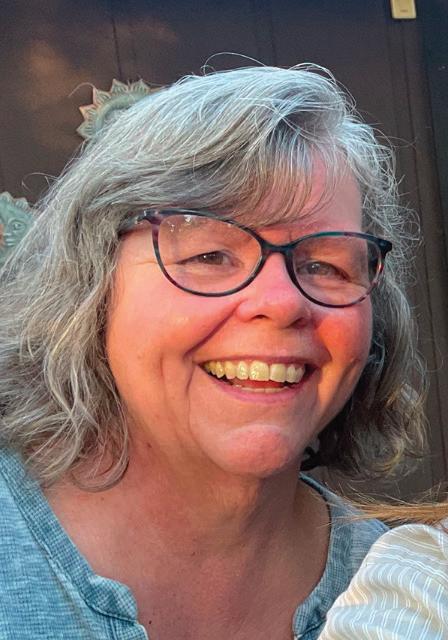
Deleasa Randall-Griffiths is a Professor, and Director of the Online Undergraduate Communication Studies Program in the Department of Communication Studies at Ashland University. She earned both her M.S. and Ph.D. at Southern Illinois University at Carbondale where she specialized in interpersonal communication and performance studies. Her research interests include: family communication, storytelling, and historical performance. She serves as co-chair of Ashland Chautauqua. She portrays two historical characters, suffragist Carrie Chapman Catt and FDR’s Secretary of Labor and the first female cabinet member, Frances Perkins. She was also the narrator for the audiobook Margarita Mondays by Angela Spade.

The Steve Brown Jazz Trio consists of Steve Brown on piano and vocals, Dan Conwell on bass and Steve Berry on drums. The group plays together only occasionally, but the three musicians have had lots of experience performing together and with other groups. stevebrownsmusic.com
A Woman Unafraid: The Achievements of Frances Perkins by Penny Coleman
The Woman behind the New Deal: The Life and Legacy of Frances Perkins, Social Security, Unemployment Insurance, and the Minimum Wage by Kirstin Downey
Dear Miss Perkins: A Story of Frances Perkins’s Efforts to Aid Refugees from Nazi Germany by Rebecca Brenner Graham
Frances Perkins: First Woman Cabinet Member by Emily Keller
The Courage to Meddle: The Belief of Frances Perkins by Tom Levitt
Madam Secretary, Frances Perkins by George Whitney Martin
Frances Perkins, That Woman in FDR’s Cabinet! by Lillian Holmen Mohr
The Roosevelt I Knew by Frances Perkins

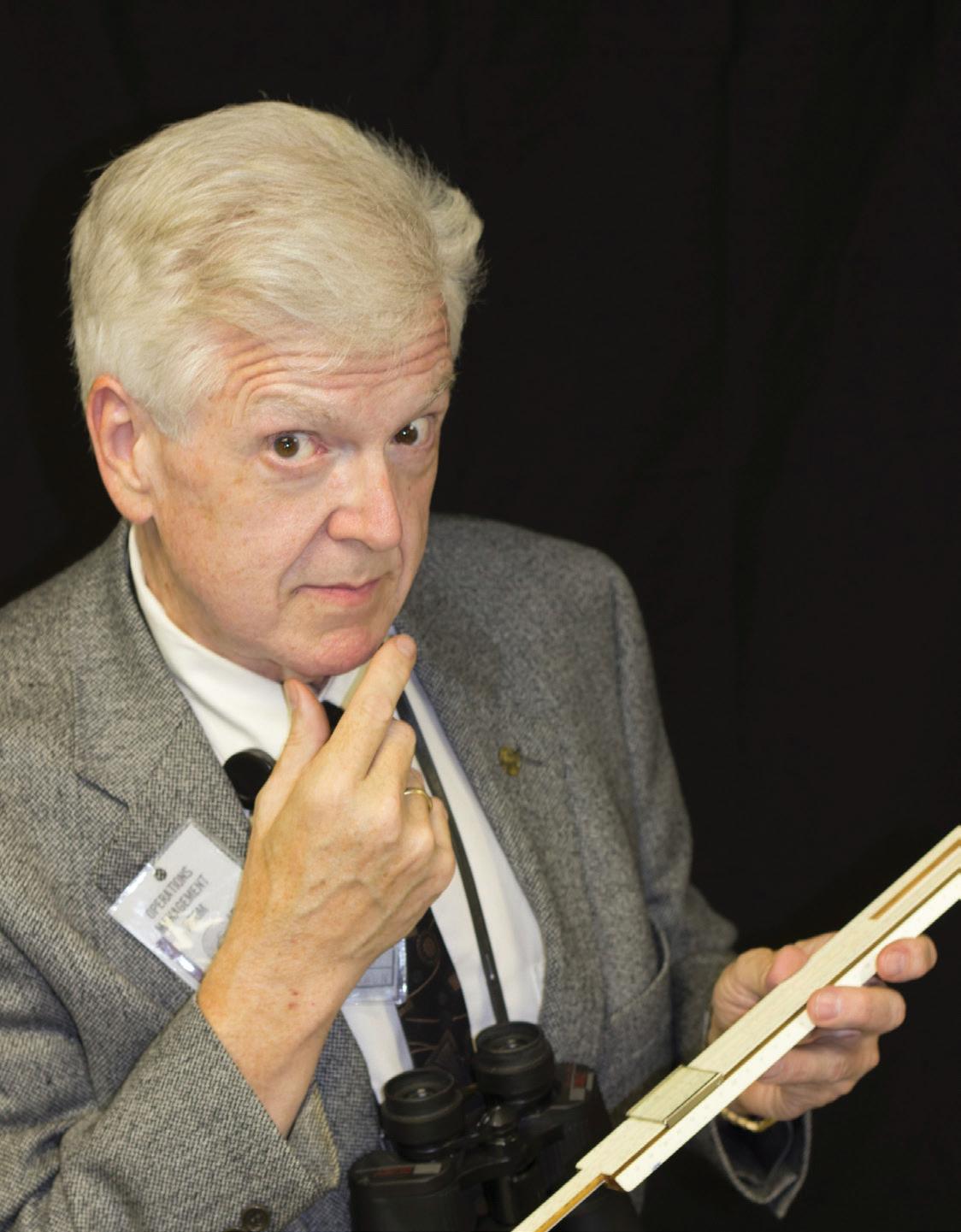
1912 Born in Wirsitz, Germany; father was Minister of Agriculture
1930 Joined German Society for Space Travel (a rocket club)
1934 Earned Ph.D. in physics after a B.S. in aeronautical engineering
1940 Worked on long range missiles, the V-2, in Peenemunde
1945 Surrendered to the American military
1952 Became technical head of U.S. Army Ordnance Guided Missile Project
1958 Launched America’s first artificial earth satellite, Explorer One
1960 Appointed Director of the Marshall Space Flight Center
1969 Worked as chief architect of the Saturn V rocket that landed first man on the moon
1972 Left NASA to become VP of aeronautic firm, Fairchild Industries
1975 Founded National Space Institute, a space advocacy group
1977 Died of pancreatic cancer

by Larry Bounds
Wernher von Braun turned his childhood dream of exploring outer space into the 36-story, 6-million pound, spaceship - the Saturn V - that carried men to the moon and back to earth safely - breaking the barrier of space that kept humanity earthbound.
In his lifetime he rubbed shoulders with presidents, dictators, and celebrities. He spoke passionately of space exploration as an honored physicist and engineer and as a devoted Christian. “The heavens declare the glory of God; the skies proclaim the work of his hands” (Psalms 19:1) would be his epitaph.
Yet this scientific celebrity with his global recognition, amazing successes, and inspiring personal story lived a life of controversies that trouble us even today. The man who guided the Apollo program team to achieve President Kennedy’s dream to “put a man on the moon by the end of this decade” also guided the V-2 team to realize Adolf Hitler’s dream to wreak vengeance on the British Isles.
How can we reconcile these two sides of von Braun’s life? How can we ever reconcile the lives of any researchers who develop miraculous cures AND deadly, contagious, weaponized viruses? Engineers who build nuclear power plants to heat, cool, and light our homes AND nuclear bombs that can lay waste to entire cities in a single searing flash? Chemists who create compounds that form new materials for our safety and comfort AND toxic gasses that choke the last breaths from civilian women and children?
Born in 1912, the older son of a wealthy and socially and politically prominent German family, von Braun became fascinated by the potential to travel into space from reading the science fiction of Jules Verne and watching the German cinema. In his teens, he joined a rocket club and decided to study physics and engineering for the sole purpose of designing and building spacecraft to carry men beyond the earth.
The rise of the Nazi party brought an end to von Braun’s father’s political career, but young Wernher used the expanding military’s growth to his advantage to get comprehensive flight training, and soon he was leading the German rocket development program.
By 1943, his team at the Peenemunde research facility had created a missile capable of leaving the earth’s atmosphere, but von Braun and his team realized that it was only a matter of time until Russian and American forces would arrive, and if von Braun were to continue on his course to conquer space, he would be far better off in the hands of the American military than the Soviets.
Securing rocket-making materials and secreting research data and plans, von Braun led a hundred German rocket scientists across Germany and into American hands. The end of the Second World War found von Braun shipped to the great American Southwest, as a leader of military missile research for the U.S.A. Then, in Huntsville, Alabama, his team refined the V-2 rocket to create the Redstone intercontinental ballistic missile, the cornerstone of America’s nuclear missile defense system. Many argue it was only the threat of the certain destruction of the world by these weapons that prevented a possible third world war.
Von Braun still longed to create rockets for space travel, so he began writing a series of books and articles for the popular press about the benefits of space exploration. He travelled widely as a public speaker arguing for the necessity of developing the tools to carry humans to other worlds. He appeared on TV with Walt Disney. He inspired and intrigued his audiences with the beauty of space and the promise of new transportation and other scientific benefits that would be a blessing to humanity.
With the launching of the Soviet satellite Sputnik and President Kennedy’s challenge to land a man on the moon before 1970, the nation mobilized behind a newly created National Aeronautics and Space Administration (NASA). Von Braun now headed the Marshall Space Flight Center in Huntsville. His army of engineers and technicians stepped America through the Mercury, Gemini, and Apollo programs. Their crowning achievement was the launch of the Saturn V rocket.
With the success of the Apollo program and the footsteps of a dozen astronauts on the surface of the moon, von Braun moved to Washington, D.C. in 1970 and retired from NASA in 1972 to pursue private corporate development of satellites, shuttles, and space stations.
Diagnosed with cancer shortly after retirement, he died at the age of 65 in 1977, but his dreams for human space travel still inspire us over 45 years later.
ADULT WORKSHOP: Inspiring the Dream of Space Travel
Wednesday, July 16, 2025 at 1 p.m.
Ashland County Council on Aging
This is a photo tour of the life of Wernher von Braun, focused on the people, places, art, and literature that inspired him to pursue his own quest to conquer space. It concludes with von Braun’s own cultural contributions that inspired a new generation of space enthusiasts, including his three nationally televised appearances with Walt Disney.
YOUTH WORKSHOP: How to Make a Rocket Fly!
Friday, July 18, 2025 at 2:30 p.m.
Ashland Public Library
This is an interactive program for elementary aged children that explores the basic principles that make a rocket work. It includes information on accessing handouts that young people can use at home to build safe, working rockets at home. Activities include children competing to set indoor altitude records.
(Please note: no fire or ignition is used in any of these models, and none are rigid, avoiding an impact danger.)

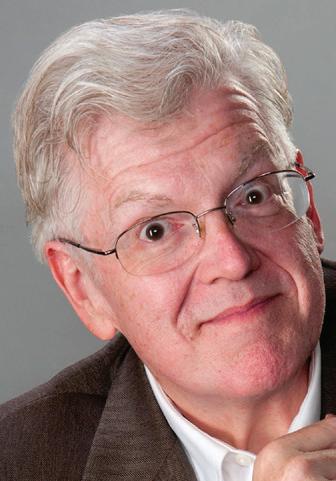
Larry Bounds has been a Chautauqua performer since 2002 presenting an assortment of historical figures including Churchill, Einstein, Houdini, and Disney for festivals from Florida to Colorado. Chautauqua pioneer George Frein was his mentor. In December 1972, Larry attended the late night launch of Apollo 17 that carried the last manned mission to land on the moon. Neither he nor von Braun imagined that America would not be returning to the moon in the next 50 years. In 2019 he retired as a nationally certified teacher after 35 years in the classroom, but he still regularly performs as a professional magician as he has since 1973 when he performed for 8 years for Ripley’s Believe It or Not! He earned his B.A. in theatre and an M.S. in education from The University of Tennessee. He lives in Greer, South Carolina, with his wife Carole, is active in Mensa, and serves on several community boards.
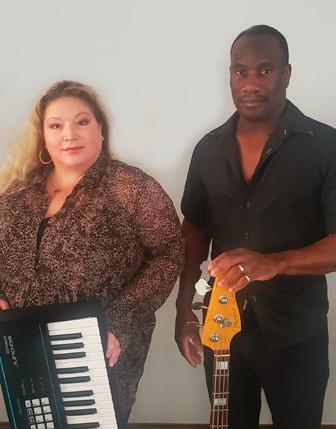
Mary Spayd and Glenn Armstrong have performed together for over 20 years in tribute bands and as a duo since 2009. Their concerts feature Mary’s amazing vocal talents and Glenn’s masterfully expressive bass guitar and music production. They incorporate their many years of experience to present a high-quality and energetic live music performance, where the biggest music of yesterday remains alive today! thebridgelivemusic.com
Dark Side of the Moon: Wernher von Braun, the Third Reich, and the Space Race by Wayne Biddle
In the Shadow of the Moon: America, Russia, and the Hidden History of the Space Race by Amy Cherrix (Recommended for readers 13-17)
Project Paperclip: German Scientists and the Cold War by Clarence G. Lasby
Von Braun: Dreamer of Space, Engineer of War by Michael Neufield
Wernher von Braun: Crusader for Space by Ernst Stuhlinger
Dr. Space: The Life of Wernher von Braun by Bob Ward
The Voice of Dr. Wernher von Braun: An Anthology (Apogee Books Space Series) by Irene E. Willhite

1866 Born Johanna (Annie) Mansfield Sullivan on April 14 in Agawam, Massachusetts
1876 Admitted to Tewksbury Almshouse with brother, Jimmie; he died there
1880 Befriended and tutored in sign language by Laura Bridgman, a blind and deaf graduate of Perkins School for the Blind
1886 Graduated class valedictorian from Perkins
1887 (March 3) Met deaf, dumb, and blind six-year-old Helen Keller
1887 (April 5) Finger spelled W-A-T-E-R while pumping water from a well into Helen’s hand; Helen realized all objects have names
1888 Convinced Kellers to enroll Helen in Perkins School for the Blind
1891 Helped Helen write and publish The Frost King; Helen accused of plagiarism; Annie and Helen leave Perkins
1894 Attended Wright Humason School in New York City with Helen; met and befriended Mark Twain
1903 Assisted Helen in writing and publishing her autobiography The Story of My Life
1904 Helen graduated cum laude from Radcliffe with Annie’s relentless assistance in spelling and reading to her daily for hours on end
1905 Began teaching Helen to speak, at her insistence, using the Tadoma method
1905 Married John Macy; marriage ended in 1914
1936 Died on October 15

by Anne Pasquale
Long before Annie Sullivan broke through the barriers that isolated and prevented a six-year-old child named Helen Keller from communicating with the world, she had overcome what many see as insurmountable obstacles herself. Often quoted as saying, “Keep on beginning and failing. Each time you fail, start all over again, and you will grow stronger until you have accomplished a purpose. It may not be the one you began with, but perhaps one you’ll be glad to remember.” That is how Sullivan lived her life – beginning, failing, recovering, learning, failing again – until she became the groundbreaking teacher she never intended to become, but that we all know her to be.
A child of incredible perseverance, resourcefulness, and exceptional intuition, Annie survived the most challenging of childhoods. She was born into a home of poetic poverty. Her parents, Thomas and Alice Sullivan, driven by the potato famine from their Irish homeland, came to this country with little to call their own. Or, as Annie would later recount, “They left all that was dear to them and came to a strange land – perhaps with Tom Hood’s cry upon their lips, ‘O God, that bread should be so dear, and flesh and blood so cheap.’” Annie, the oldest of five children, was born on April 14, 1866 and christened Johanna Sullivan, but her father Thomas insisted they call her Annie.
Thomas would say the black rook of Ireland was at their heels at every turn. When Annie was less than four-years-old, her mother contracted tuberculosis. Her sister Nellie and her youngest brother John died before their first birthdays. Her brother Jimmie was born with a tubercular hip. Only Mary, the youngest of the siblings, was born healthy. Annie contracted trachoma when she was five, which soon rendered her legally blind. Her mother, Alice, died when Annie was eight. Convinced that he was cursed, Thomas, a drunkard and a brawler, abandoned the children for fear that he could not care for them. Mary was sent to live with an aunt, and Jimmie and Annie were sent to live at an almshouse in Tewksbury, Massachusetts – a home to all the unwanted: pregnant women, murderers, thieves, and what some would call ‘the horribles.’ Annie would later write of her time spent there, “I doubt if life, or eternity for that matter, is long enough to erase the errors and ugly blots scored upon my brain by those dismal years.”
Annie, never accepting of her plight, raged at her misery. She was
described as ‘a terrible child,’ hot tempered like her father ‘and prone to fits and tantrums, throwing things and lashing out.’ The only thing she seemed to care for was her brother Jimmie. Indeed, Jimmie and she cared for one another: he was her eyes and she was his legs. Then, sadly, at the age of six, he died.
So, at the age of ten, Annie was illiterate and alone in the world. Yet she refused to accept defeat. Life had failed her, but she would not fail. Bright and determined, she set her sights on achieving the one thing that would release her from institutional life, an education. Her newfound mothers, the women of the ward, aided her in her quest. They told her of Perkins School for the Blind. They learned of how its founder, Samuel Gridley Howe, was to send his protégé, Franklin Sanborn, General State Inspector of Charities, to investigate Tewksbury and urged her to plead her case, saying, “Frank B. Sanborn is the name. If you could ever see him, you might get out.” Shortly, Mr. Sanborn and his party arrived at Tewksbury and the child hurled herself into their midst without knowing which was he, crying, “Mr. Sanborn, I want to go to school!” Soon after, she was admitted to Perkins School for the Blind. She endured many poor, then successful operations, and regained her sight. She was Valedictorian of her graduating class.
Then, in 1887, Mr. Arthur Keller sought the help of Dr. Alexander Graham Bell for his daughter, who was deaf and blind. Dr. Bell urged Mr. Keller to seek the help of Perkins. So it was that on March 3rd of that same year Annie found her purpose: a six-year-old blind, deaf, and mute child, who grabbed her bag and pitched a violent tantrum when Annie snatched it back. Her name was Helen Keller. Until Annie’s death on October 20, 1936, they would be inseparable. And together, they would change the world of education forever. Mark Twain once wrote to Helen saying, “You are a wonderful creature. You and your other half… Miss Sullivan, I mean. It took the pair of you to make a complete and perfect whole: Helen and Teacher.”
ADULT WORKSHOP: Tell the Truth with Annie Sullivan
Wednesday, July 16, 2025 at 10 a.m. Loudonville Public Library/Golden Center in Library basement meeting room
A fictitious live theatre game show where Annie Sullivan will share some of her favorite myths and legends that surround her, and her work with Helen Keller. Working with the audience divided into teams, Annie will invite participants – through multiple choice and true or false questions – to guess the truth or origin of each story.
YOUTH WORKSHOP: Story Telling – from Stage to Page and Back Again
Thursday, July 17, 2025 at 2:30 p.m Ashland Public Library
Storyteller Anne Pasquale begins her workshop with a live storytelling performance. Then allows young participants to peel back the curtain and learn and implement the skills that make it happen. An hour filled with theatrical fun, games, and improvisation will culminate in a short original storytelling of one or more classic tales for family and friends.

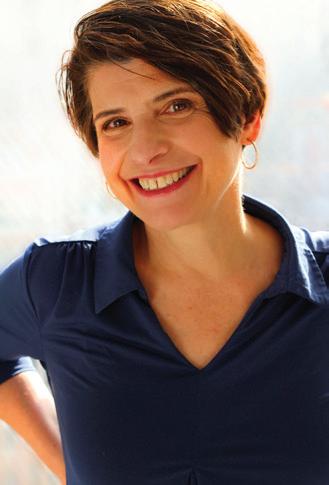
Anne Pasquale (actress & playwright) trained at London Academy of Music and Dramatic Art (LAMDA) and the New York School of the Arts. She creates and tours her repertoire of Living History Programs for audiences of all ages in venues along the east coast. Pasquale is a member of The Actors Studio and a founding member of the Accidental Repertory Theatre (ART). Her NY Off Broadway credits include Martha in Virginia Wolf, Serafina Della Rosa in The Rose Tattoo, Emma Goldman in The Haymarket Chronicle and Kristina Linde in Variations on a Doll’s House. She is the recipient of the 2015 Broadway World Rhode Island Best Writer and Best Performer awards for her solo show, BOB annepasquale.com
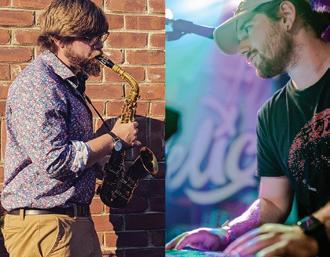
Falcon Punch was created by brothers Satch Garlock and Michael Spalding to fill in for a band that had to cancel their show during the 2020 Band Shell Summer Series. The duo comes out of hibernation every few years to answer the calls of open spots to play during the summer. The band focuses on blending jazz, jams, and video game soundtracks together with Satch on piano and vocals, and Michael on guitar and saxophone. instagram.com/satch.garlock/
Helen and Teacher: The Story of Helen Keller and Annie Sullivan Macy by Joseph P. Lash
The Story of My Life by Helen Keller
Annie Sullivan Macy: A tribute by the Foster-child of Her Mind by Helen Keller
Signing: How to Speak with Your Hands by Elaine Costello and illustrated by Lois Lehman
Helen Keller: Sketch for a Portrait by Van Wyck Brooks
Annie Sullivan Macy: The story behind Helen Keller by Nella Braddy


1955 Born February 24 in San Francisco, CA
1969 Met and befriended Steve Wozniak
1973 Enrolled at Reed College for Fall semester; did not return the following Fall
1976 Began assembly of the Apple I with Wozniak at adoptive parents’ home and garage
1979 Visited Xerox PARC; saw a graphical user interface (GUI), the breakthrough he was looking for to make computers accessible to the masses
1980 Apple becomes a public entity; his share of the company makes him one of the richest 25-year olds in history ($256 million)
1985 Resigned from Apple after bitter disagreement with CEO John Sculley
1986 10 year “Wilderness Period”; developed NeXT computer; met biological mother and sister; development of Pixar; collaboration on Toy Story with John Lasseter and others; Apple bought NeXT operating system for $400 million
1997 Introduced as Apple’s interim CEO; months later, Apple’s new “Think Different” campaign began and signaled a new direction for the company
2001 iPod introduced
2007 iPhone introduced
2010 iPad released
2011 Battling cancer in August; resigned as CEO of Apple; died October 5
by Jeremy Meier
Steve Jobs made computers accessible to the world. Then he made them fit in our pockets.
Jobs wanted the computer to be “a bicycle for the mind.” To Jobs, computers could be a tool capable of bestowing an enhanced efficiency and an enhanced creativity to its users. This analogy sounds simple enough but making the complex workings of a computer sleek and userfriendly was no easy task.
In 2009, Fortune Magazine named Steve Jobs the CEO of the Decade. The accolade touted Apple’s transformation of the music industry as well as cell phone technology. Digital music players had already existed before Apple entered the forum. So, too, existed the cell phone and the Blackberry. What made Jobs’ contributions to these technologies profound? Apple made them better. Infinitely better. And Apple connected them into one device.
Shortly before this Decade of Jobs, Steve returned to the company he and Steve Wozniak had founded many years prior with a fervent approach to making new and better products. “I didn’t see it then, but it turned out that getting fired from Apple was the best thing that could have ever happened to me. The heaviness of being successful was replaced by the lightness of being a beginner again, less sure about everything. It freed me to enter one of the most creative periods of my life.”1
Among the first objectives in Jobs’ return to Apple was the company’s “Think Different” campaign. Apple would now be a company advertising its values. Consider the beginning of its 1997 commercial.
“Here’s to the crazy ones.
The misfits.
The rebels.
The troublemakers.
The round pegs in the square holes.
The ones who see things differently.” 2
As the Decade of Jobs began, millions of Americans were burning CDs on personal computers. (The iMac did not have a cd burner.) Napster and other startups allowed consumers to pirate their music causing artists and producers to seethe. The introduction to the first iPod in 2001 offered users a compact device that allowed them to take their entire music collections with them on the go. (Download all your CDs into this small
device! It will hold your entire library!) That was not enough to satisfy Jobs’ estimation of the technology’s potential. Two years later, the iTunes Store was launched. Artists were paid for their music, a song at a time, and consumer selected playlists were the new way of personalized listening. This was a new way of listening, consuming and selling music.
As for wireless devices— in Jobs’ words, “everyone hated their cell phone.” Remember the days of pressing on the plastic buttons of your cell phone repeatedly in order to select the next letter you needed to spell a word in a text message? And Blackberry devices forced users to handle a bulky plastic keyboard which made up a third of the device. Styluses were used for operations on so-called “smart phones.” Styluses were also capable of hiding in a couch cushion or under a car seat. When Jobs unveiled the iPhone at the 2007 MacWorld conference he did so with a ringmaster’s flair. “This is a day I’ve been looking forward to for two-and-a-half years!”3 A bulky plastic keyboard? There was not one to be found on this new technology. A stylus? Jobs boasted while wiggling fingers, “God gave us ten styluses.” Apple’s patented Multi-Touch technology allowed users to enlarge and minimize the image on the screen. Room for further improvements? Of course. The App Store was created the following year and allowed users to download new functions for their devices; it also cultivated further innovation by app creators.
“This is one device,” said Jobs. One device to be sure; capable of directing users to a destination while capturing images and sharing the journey with other humans along the way. This was truly a bicycle for the mind.
Steve Jobs had a clarity of vision for what existed and the creative tenacity to pursue what was possible. The closing lines of the “Think Different” commercial provide a noteworthy coda to Jobs’ vision and drive. “The people who are crazy enough to think they can change the world are the ones who do.”
1 from Steve Jobs’ Commencement address at Stanford in 2005
2 Apple’s 2001 “Think Different” ad campaign
3 from Steve Jobs’ keynote at the 2007 MacWorld
ADULT WORKSHOP: What’s Wrong with this Thing?
Thursday, July 17, 2025 at 4 p.m.
Ashland County Senior Citizens Center
Why did Steve Jobs have such sparse furnishings in his home? Why did the Jobs family spend weeks debating on a choice of washing machine? In this workshop, we’ll take a look at regular products we use day-to-day and see for ourselves why Steve Jobs often saw them as less than “insanely-great!” How might functional design improve the way we look at products? Also, what was it about the Steve Jobs presentation style that made his innovations stand out?
YOUTH WORKSHOP: New Heroes, New Bugs, New Toys!
Friday, July 18, 2025 at 10 a.m.
YMCA Youth Camp at Myers Memorial Band Shell
What goes into creating a great character? We’ll talk about some of the beloved characters from Pixar Studios that came from the mind of John Lasseter and where their inspirations came from. We’ll also brainstorm on storytelling techniques that make a character memorable.

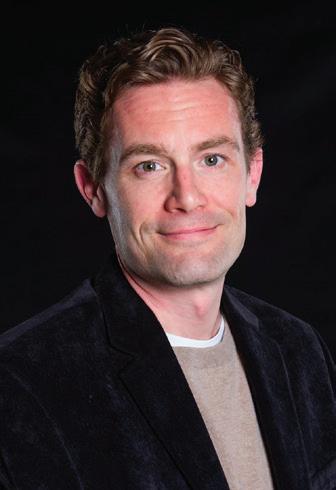
Jeremy Meier serves as the Chair of Creative Arts & Media at Owens Community College in Northwest Ohio. Ashland audiences last saw Jeremy in his portrayal of John Dillinger last summer. Meier holds a Bachelor of Arts degree in Theatre from Central Michigan University and a Master of Fine Arts in Acting from the Ohio State University. In addition to his portrayals of John Dillinger and Steve Jobs, Meier also has developed programs on Charles Chaplin, Robert Kennedy and Oliver Hazard Perry. He is currently researching and developing a program on John F. Kennedy.
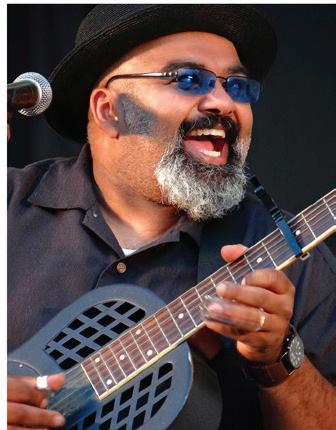
Austin Walkin’ Cane is a blues singer, songwriter, and slide guitar impresario who performs both acoustic and electric guitar mediums. He has toured internationally and crossed the USA, most notably from New Orleans to Juneau, Alaska with only a guitar and suitcase in hand. His voice and original compositions recall Delta Blues, Chicago Blues, and Bourbon Street Jazz.
walkincane.com
Steve Jobs: The Man Who Thought Different by Karen Blumenthal
Small Fry: A Memoir by Lisa Brennan-Jobs
Revolution in the Valley: The Insanely Great Story of How the Mac Was Made by Andy Hertzfeld
Steve Jobs by Walter Isaacson
To Pixar and Beyond: My Unlikely Journey with Steve Jobs to Make Entertainment History by Lawrence Levy
Becoming Steve Jobs by Rick Tetzeli and Brent Schlender
is made possible with additional support from:
($1,200+)
Bob & Jan Archer
Dave Kowalka
INNOVATOR ($150+)
Anonymous
Allan & Mary-Rose Anderson
Armstrong Group
Ashland County Community Foundation (ASL Interpretation)
Mary Ball
John & Lori Byron
Starr & Jim Dobush
Harshman Family Charitable Fund
Rob Hovis
Mike & Seiko Hupfer
Ben & Joyce Linnabary
Peace Lutheran Endowment
Tom & Barb Slabaugh
The Stratton Family
John & Doris Wanamaker
Mike & Judy White

($100-$149)
Teresa Durbin-Ames & Larry Ames
Ashland Area Chamber of Commerce
Ashland Noon Lions
Tedd Boli
Tricia & Stephen Calver
David & Debora Gray
Annalee Hoover
Main Street Bank
Kevin Radaker
($50-$99)
Henley Graphics
Tom & Marilyn Koop
Beth Lowenstern
John & Penny Miller
Kristine Parsons
Cindy Thomas
Ashland Board of Realtors
Ashland County Park District
Ashland Main Street
Ashland Public Library
Ashland Theatre
Ashland University
Tommy & Laurie Beech
Starr & Jim Dobush
Explore Ashland
Farmers State Bank
Hampton Inn & Suites
Mike Ruhe
Vinyl Marketing, LLC
WebDev Works, LLC
Longtime supporters, Bob & Jan Archer, provided a challenge match for 2025. They would match (up to $3,000 total) donations to Ashland Chautauqua. Our amazing donors stepped up for this challenge and over $3,000 was given by early May 2025. Thank you to each of our donors listed above and especially Bob & Jan Archer for giving $3,000 this year after the challenge was met!
Donations are greatly appreciated to sustain Ashland Chautauqua from year to year. Please give what you can through audience donation, by going to our website (www.ashlandchautauqua.org), or by sending contributions to: Ashland Chautauqua, P.O. Box 611, Ashland, Ohio 44805
Ashland Chautauqua has an endowment at the Ashland County Community Foundation (ACCF).
This endowment provides Ashland Chautauqua with an additional source of funding for special projects and/or to expand features of the popular regular summer programming. However, this does not replace the annual donations to Ashland Chautauqua, which sustain the five evening performances and the workshops every summer. Contributions by donors and buckets passed during the events are vital funding sources of Ashland Chautauqua’s annual budget income. Donations can be made online at www.ashlandforgood.org or by mailing a check with “Ashland Chautauqua Agency Fund” in the memo line to: Ashland County Community Foundation, 300 College Avenue, Ashland, Ohio 44805.







4
4
4
4
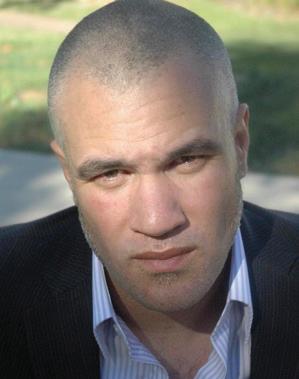
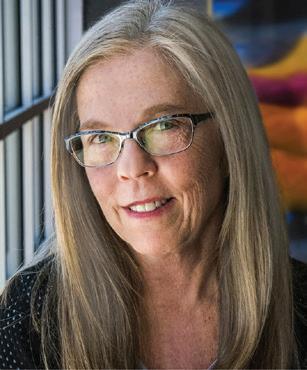
4
4
4
4
4
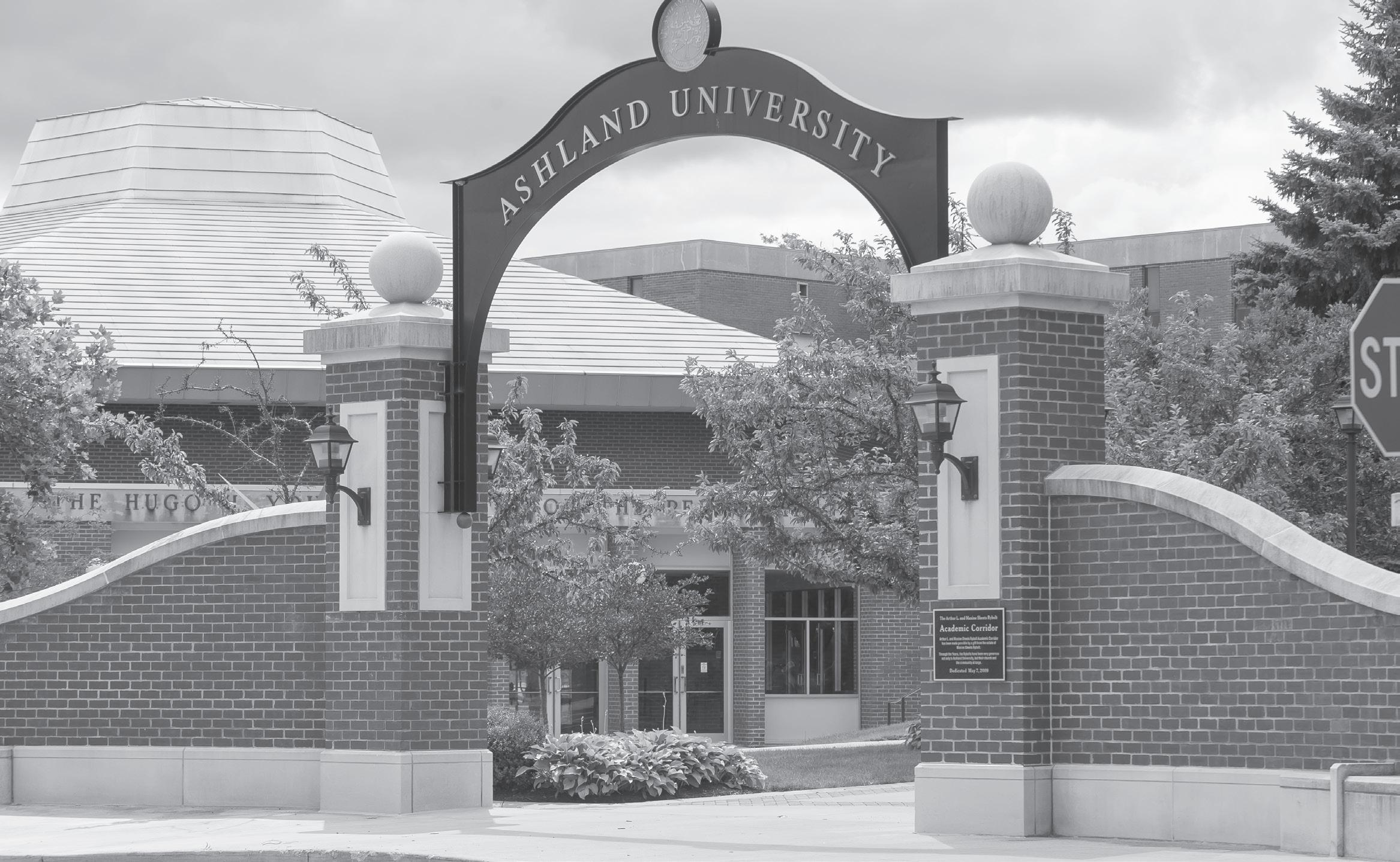
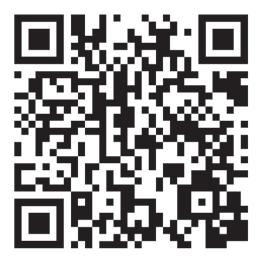
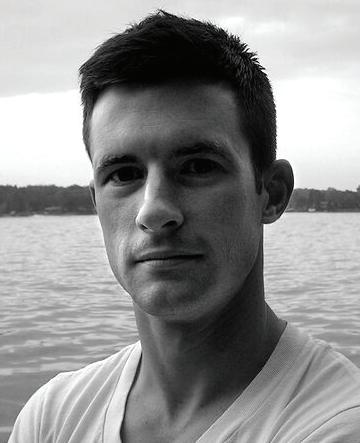
Deleasa Randall-Griffiths
Ashland University
Laurie Beech
Retired from McCready Interiors
Lori Byron Ashland University
Amy Daubenspeck
Ashland Chamber of Commerce/ Explore Ashland
Starr Dobush
OCALI Lifespan Transition Center
Barb Slabaugh Wayne County Community Foundation
Dorothy Stratton
Ashland University (Professor Emerita)
Cindy Thomas
The Good Shepherd Nursing Home
Former Member: Judith Webster
Guy C. Myers Memorial Band Shell FOUNDING MEMBER: Tricia Smith Calver Ohio Northern University
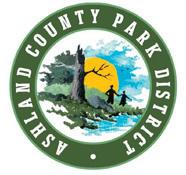

Ashland County Park District
Works, LLC Staging and transportation of staging
Ashland Chautauqua seat cushions are available at the Information Table for a donation.
Let us know if you would like to help with Ashland Chautauqua. Contact us at 419-281-4584 or info@ashlandchautauqua.org
Attend all five evening performances of the 2025 Breaking Barriers for your chance to win! Pick up your 5-Nighter Passport card on Tuesday and ensure it is stamped each night by an Ashland Chautauqua Committee member. Following the final performance on Saturday night, one completed passport will be drawn as our grand prize winner!


Check out our video produced by Vinyl Marketing on our website (ashlandchautauqua.org). It is also on our Facebook page and YouTube channel.

Join us for an informal gathering of the scholars and committee members for a casual conversation. Ask a scholar a question, hear more about the scholars, or learn about the characters the scholars portray. This will be held in the Community Room at the Ashland Board of Realtors (107 E Main Street) on Thursday, Friday, and Saturday mornings from 9-10 a.m. All are welcome to attend.
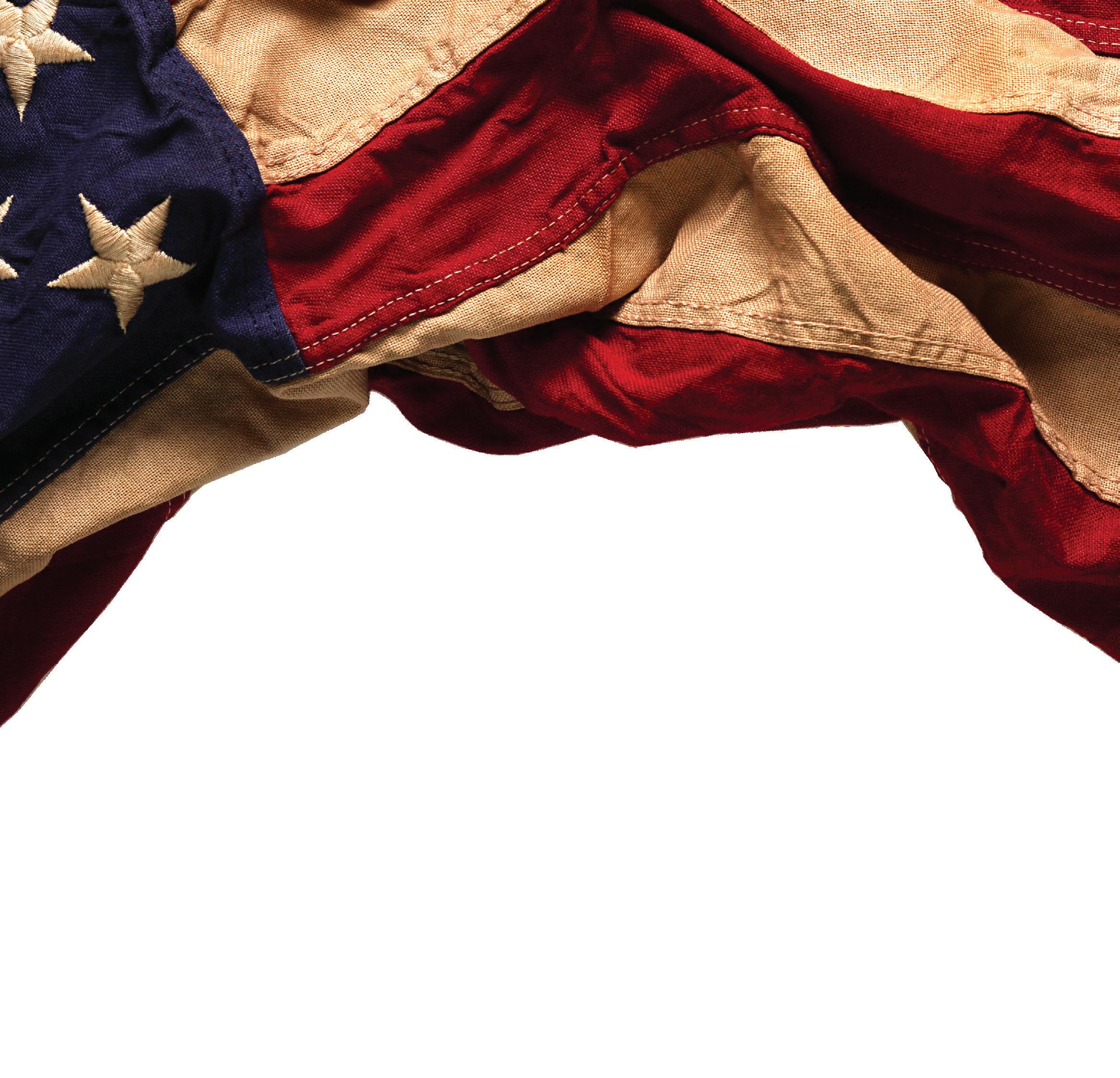
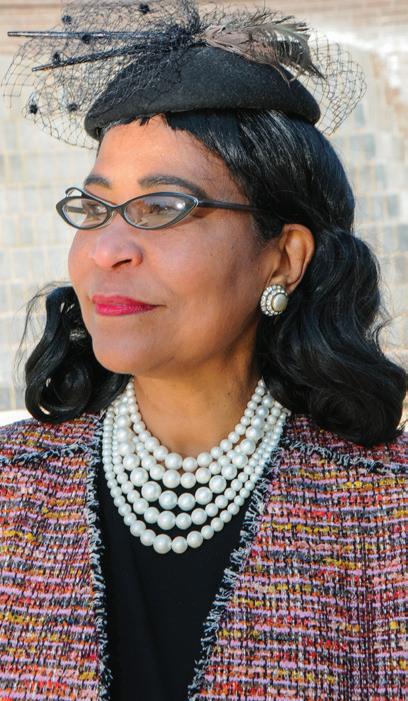
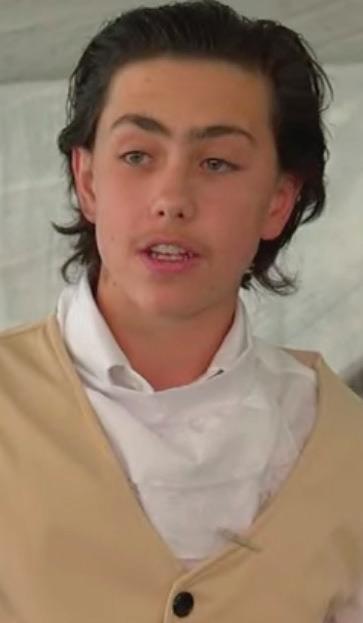
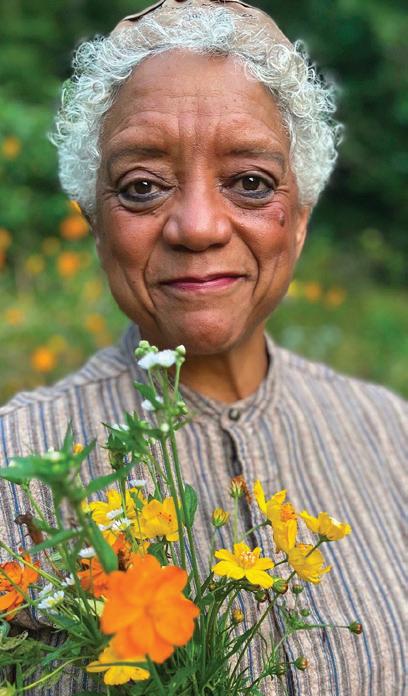
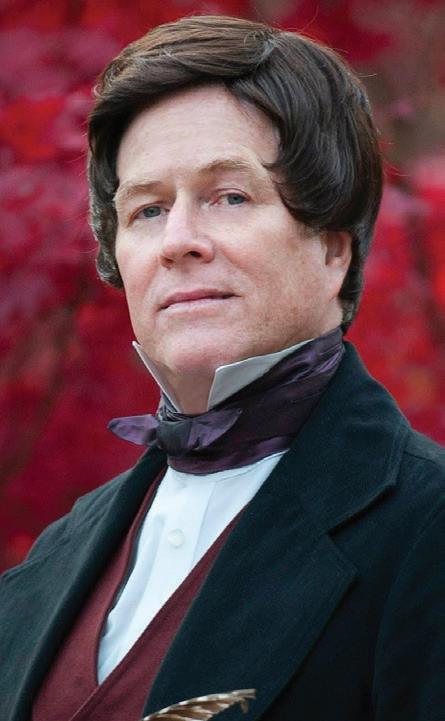
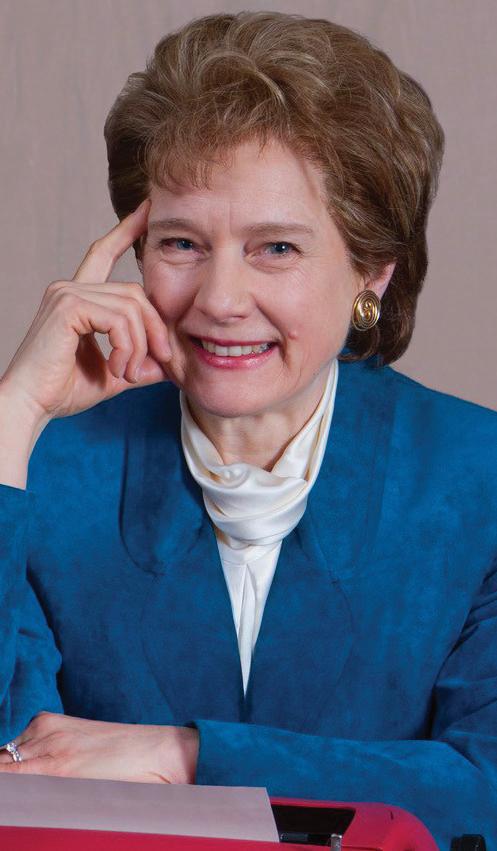
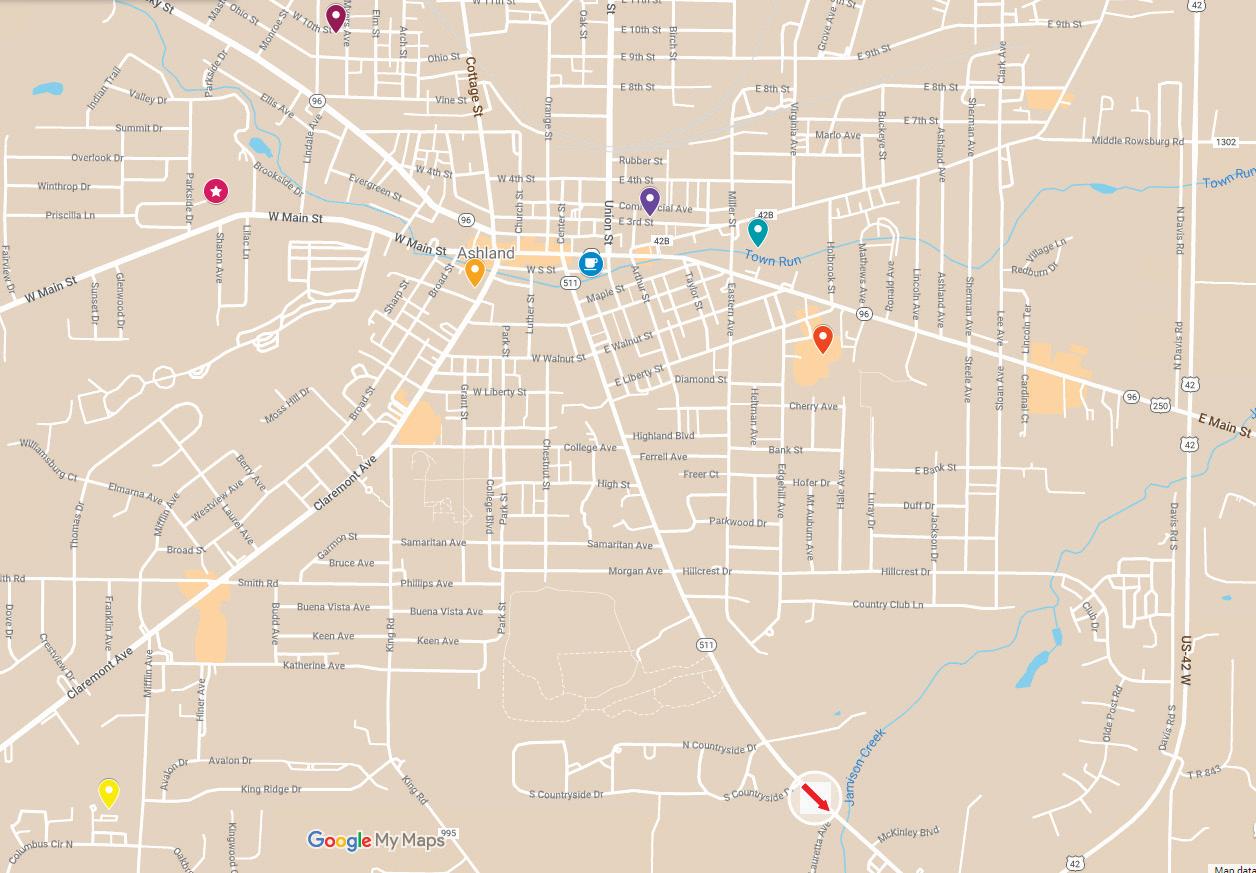
COFFEE
Ashland
RAIN
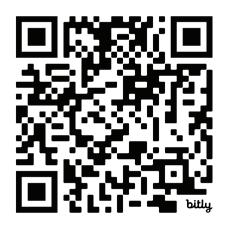
Ashland
Ashland
Ashland